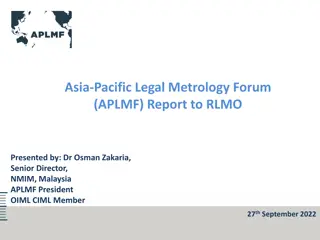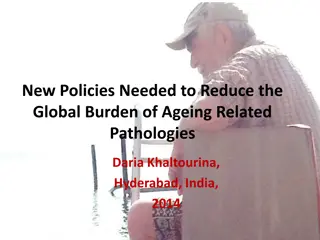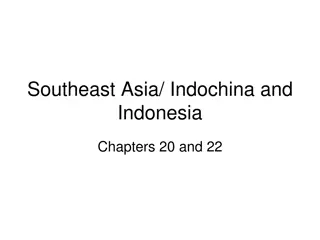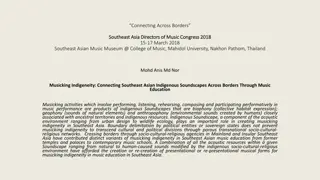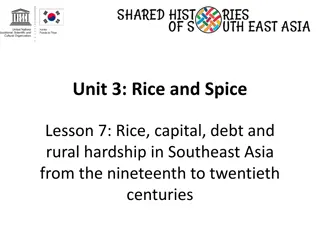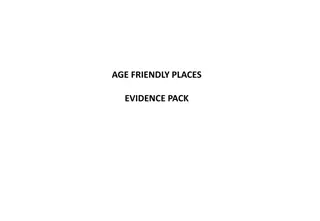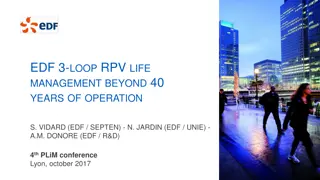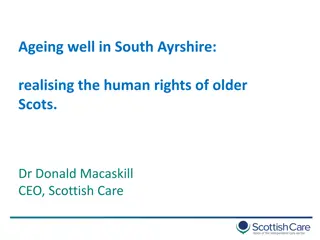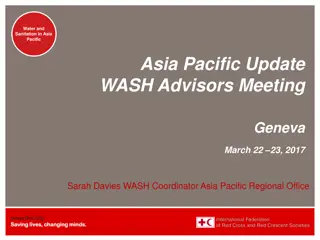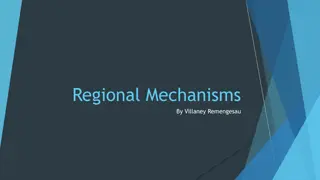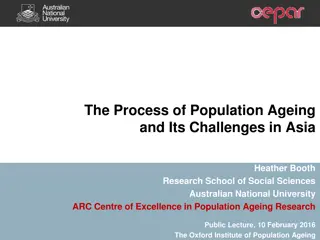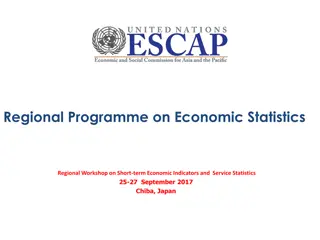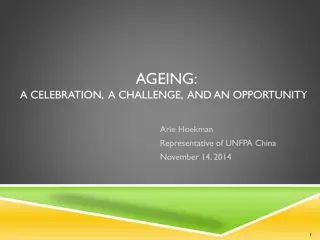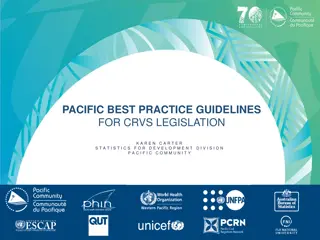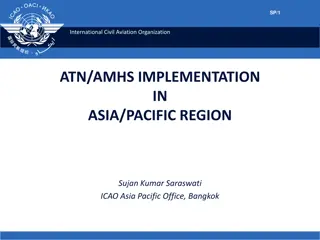Understanding Family Patterns, Support Impact, and Ageing Trends in Southeast Asia and the Pacific
Explores the changing dynamics of family structures, impact support systems, and the growing elderly population in Southeast Asia and the Pacific region, highlighting key statistics, trends, and implications for the future. The discussion includes insights on older persons, family definitions, fertility rates, dependency ratios, and the evolving shape of families in the ASEAN countries by 2050.
Download Presentation

Please find below an Image/Link to download the presentation.
The content on the website is provided AS IS for your information and personal use only. It may not be sold, licensed, or shared on other websites without obtaining consent from the author. Download presentation by click this link. If you encounter any issues during the download, it is possible that the publisher has removed the file from their server.
E N D
Presentation Transcript
By Braema Mathiaparanam, Regional President, Southeast Asia and Pacific, International Council of Social Welfare GO-NGO Forum/brunei/icsw/bm 17/9/2024 1
Definitions The Phenomenon Family Patterns The Impact Support: Structures, Policies, Progammes The Gaps Recommendations GO-NGO Forum/brunei/icsw/bm 17/9/2024 2
Who is an Older Person? Age of 60, 65 Old-Old eg today, persons aged 80 years or over account for close to one in every seven older persons (for those aged 60 or over). By 2050, this ratio is expected to be one person aged 80 or over for every five older persons Definitions affect data, research, trends, policies What Constitutes Family? Nucleus family Extended family Rural/Urban Models Migrant Workers Families GO-NGO Forum/brunei/icsw/bm 17/9/2024 3
Key Global data Key ASEAN data Total Fertility Rates Proportion of Older Population Dependency Ratio Development Transition Gap GO-NGO Forum/brunei/icsw/bm 17/9/2024 4
Ranks of elderly growing by 2.6 % per year 22 per cent of world s population will be aged 60 and above in about 40 years time, that is, about two billion people Dependency ratios will triple in Asia by 2050 while Latin America and the Caribbean will more than triple Feminization of Ageing GO-NGO Forum/brunei/icsw/bm 17/9/2024 5
435 % increase bet 2000 and 2050 a rise from 39.5 million to 175.8 million people 60 and above By 2050 all 10 ASEAN countries will see 10 per cent of the popn at aged 60 or above with Singapore reaching almost 40 per cent and Vietnam, almost 30 per cent. Dependency Ratio( old-age dependency ratio is the ratio of the population aged 60 or over to the population aged 15 to 59 expressed per 100 population) in ASEAN will triple with Brunei having the highest number of people aged above 60 as compared to the younger population Fertility Rates and Shape of Families are changing - eg family size in Indonesia and Thailand decreased from about five in 1980s to four in 2000; and from 6.6 to five in the Philippines; In Malaysia, proportion of extended families decreased from 28% in 1980 to 20 % in 2000 and proportion of nucleus families rose from 55 percent to 65 percent during the same time. GO-NGO Forum/brunei/icsw/bm 17/9/2024 6
Source: World Population Prospects: The 2008 Revision, United Nations Population Division, New York. GO-NGO Forum/brunei/icsw/bm 17/9/2024 7
Source: World Population Prospects: The 2008 Revision, Population Division, New Source: World Population Prospects: The 2008 Revision, United Nations Population Division, New United Nations 17/9/2024 GO-NGO Forum/brunei/icsw/bm 8
GO-NGO Forum/brunei/icsw/bm 17/9/2024 9
Urban model - rise in nucleus families Rural rise in out-migration to Urban Cross border migration In some countries, eg Indonesia more households and in some cases even bigger family size but increase in nucleus families Divorce , widowhood and rising singlehood eg in Malaysia one in 10 households were either single out of choice, divorce or widowhood Marrying later eg Singapore age of 28 for women and 30 for men and rise in DINKS( Dual Income No Kids Syndrome) Live-in foreign domestic helper as caregiver GO-NGO Forum/brunei/icsw/bm 17/9/2024 10
Women - more women living alone eg the sex ratio of males 60 and above for 100 females is 79 for Thailand, 82 for Philippines and 86 for Malaysia and Lao PDR; more women with less social security as there is higher illiteracy; women prone to lifelong disabling illnesses Isolation social and psychological Income Security Rural areas fields to till and out-migration Older people and employability Special support for growing numbers of Old-Old Changing demand on healthcare and co-morbidities as people grow older Caregiving structures family and community level New Products to help the elderly GO-NGO Forum/brunei/icsw/bm 17/9/2024 11
International Madrid International Plan of Action on Ageing(MIPAA); Macao Plan of Action on Ageing for Asia and the Pacific; UN recognizing the rights of the elderly Coordinating Mechanisms at the national level; focal points; cross-sectoral Concept of Ageing-in-Place jobs, flexibility at the workplace, recreation, family to community structures Intergenerational solidarity financial support from government ( eg Thailand); deeper tax reliefs for children GO-NGO Forum/brunei/icsw/bm 17/9/2024 12
Family support flexible work hours; access to caregivers; support services ( day-care, short term, respite, long term care) Income Security money for the older person, universal and some access to healthcare and transport subsidies, cash transfers(privileges or subsidy) Health promotion as a family affair Social activities Training of caregivers and accreditation systems Law eg Singapore and the Maintenance Act Tax reliefs Housing schemes GO-NGO Forum/brunei/icsw/bm 17/9/2024 13
Vulnerable elderly communities - Limited access to healthcare or transport; limited access to information Inconsistent barrier-free access Inconsistent flexible workplace practices for the elderly and the family Capacity building to meet growing needs Privilege versus Subsidies Handling older persons for their Dignity Those who live alone Die Alone care beyond death Definition of Neglect different from those applied to children? Severe mental impairment dementia Images of ageing GO-NGO Forum/brunei/icsw/bm 17/9/2024 14
Income Security cash transfers, social pensions, social insurance, medical insurance; privilege benefits, social protection floor initiative Capacity-Building - Caregivers, policy makers, employers, family members, schoolchildren, older persons Mechanisms A Coordinating National Effort Accept that the needs of the elderly cannot be met by the family alone cos of the social and cultural changes More Support Structures to Complement the Family Access to healthcare with specialized tracks at hospitals and clinics; access to transport, buildings Flexible work plans for the elderly Vulnerabilities of older women - access to social security, health A lifecourse approach to ageing; Ageing-in Place. GO-NGO Forum/brunei/icsw/bm 17/9/2024 15


